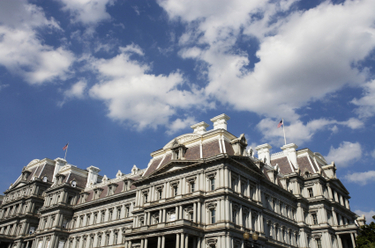
Cass Sunstein and Lisa Heinzerling debate what really happens in OIRA.
As the White House Office of Information and Regulatory Affairs (OIRA) awaits a new Administrator, debate continues to rage over the virtues and vices of the OIRA review process. In recent papers, both critics and defenders of OIRA have renewed their arguments, just as President Obama’s pick to fill the vacancy to head OIRA is under consideration by the Senate.
One of OIRA’s core responsibilities is to determine that a new regulation’s expected benefits will justify its expected costs. In addition, under executive orders adopted by Presidents Clinton and Obama, OIRA must generally choose the regulatory approach that maximizes net benefits.
However, critics oppose applying cost-benefit analysis to certain health, environmental, and safety regulations because so many of these rules’ benefits are difficult to quantify. In addition, certain statutes, such as the Clean Air Act, prohibit agencies from considering costs when developing regulations.
For this reason, Lisa Heinzerling, a law professor at Georgetown University and former Associate Administrator at the Environmental Protection Agency (EPA), argues that requiring agencies to apply cost-benefit analysis is illegal.
Sunstein responds to criticisms such as these by noting that, in practice, cost-benefit analysis plays an important but limited role. He clarifies that when rules do not have positive net benefits, agencies can still justify their actions by explaining that they are legally required to create the rule or by pointing to unquantifiable benefits. As Sunstein explains, “agencies must show that the benefits ‘justify’ the costs, not that they ‘outweigh’ the costs.”
Moreover, Sunstein states that over eighty percent of the rules reviewed by OIRA are not economically significant and, therefore, do not require a regulatory impact analysis—that is, the most formal and detailed cost-benefit assessment. He argues that with non-economically significant rules, the focus is on ensuring that the agency has considered potential alternatives, adequately responded to public comments, created a final rule that is a logical outgrowth from the proposed rule, complied with statutory process requirements, and relied on sound science.
Transparency is another controversial aspect of OIRA review. Executive Order 12,866 and Executive Order 12,563 provide certain disclosure requirements to ensure greater openness, accessibility, and accountability in the review process. Heinzerling points to four specific accessibility requirements contained in the orders. OIRA must, in writing, tell an agency if its regulation is inconsistent with the President’s policies or priorities. OIRA must make a publicly available log when an agency requests the elevation of a dispute to the President or Vice President. OIRA must provide a written explanation for any rule returned to an agency for further consideration. Finally, OIRA must identify, in plain language, the changes the agency makes to a rule.
Heinzerling asserts that OIRA does not comply with any of these requirements. Further, she contends that OIRA’s Regulatory Review Dashboard, which provides information about rules under review, is “woefully incomplete.” Heinzerling explains that the breadth of interagency impacts, coupled with the lack of a clear disclosure of OIRA’s changes, means “no one is accountable.” She conveys that the public simply does not know who makes alterations to rules.
On the other hand, Sunstein maintains that OIRA has a “great deal of transparency.” He explains that OIRA dockets on the web all meetings with parties outside of the federal government, and the agency makes available the documents from those meetings. Additionally, Sunstein contends that the number of OIRA meetings and the composition of those meetings do not tell the whole story. Many of the parties who convene with OIRA already voiced their issues with the regulation in question, or other public comments raised the same issue.
Another critique is that OIRA’s review process causes significant delays beyond the time allotted by executive order. Executive Order 12,866 gives OIRA ninety days to review a rule and ten days to review notices of inquiry, advance notices of proposed rulemaking, or actions prior to a notice of proposed rulemaking. The order provides that this time period can be extended only once for no more than thirty days.
In a recent essay on The Regulatory Review, Heinzerling argues that OIRA holds many rules for an unreasonable review period. She explains that of some rules have been at OIRA for years, far beyond the 120 day maximum review period.
In response, Sunstein asserts that OIRA does not oppose or intentionally delay rules. He argues that significant interagency concerns make the process more time consuming. Sunstein explains that OIRA functions as a “conveyer and a convener,” bringing in perspectives and knowledge from multiple sources both within and outside of the government. He argues that some rules take longer to review because it takes time for specialists to work through technical issues.
Cass Sunstein left his Administrator position in August 2012 to return to his faculty position at Harvard Law School. Afterward, Obama appointee Boris Bershteyn served as Acting Administrator for less than a year, and now Dominic Mancini, OIRA’s career Deputy Administrator, has replaced him.
In April, President Obama nominated Howard Shelanski to head OIRA. The Senate Committee on Homeland Security and Governmental Oversight held a hearing on Shelanski’s nomination and recently voted to advance his nomination to the full Senate.



